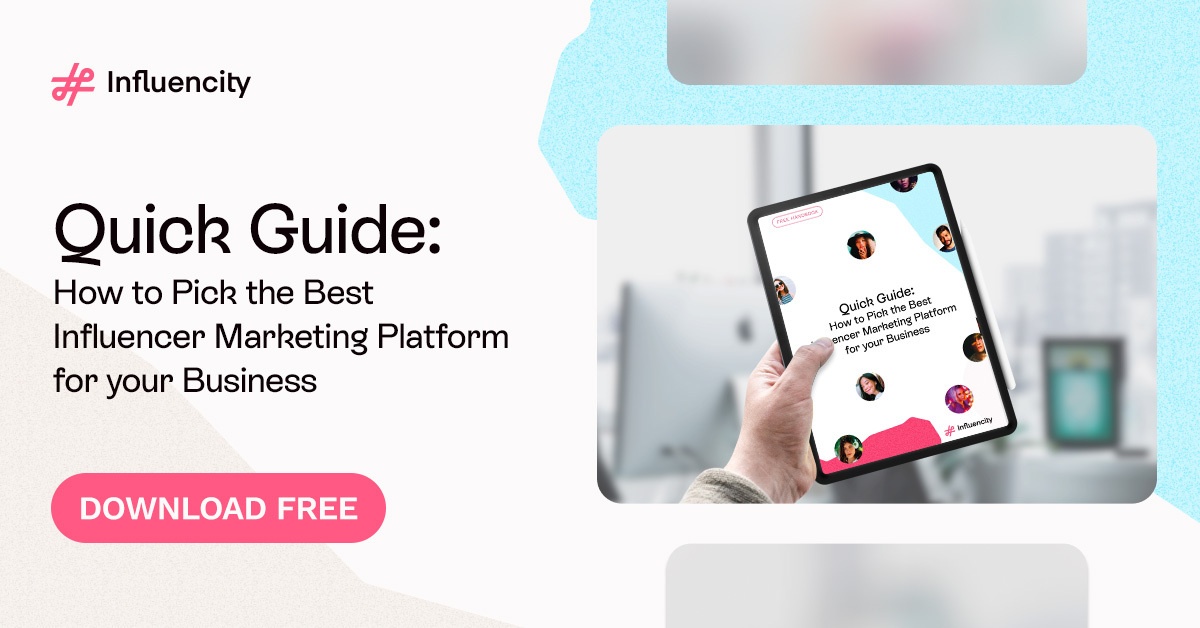Influencer Analytics: How to Optimize Your Influencer Marketing Campaigns
Influencer marketing is becoming an increasingly popular way for brands to reach consumers. However, it’s not as simple as just finding someone with a large following and getting them to post about your product or service. You also need to make sure your campaign is optimized so that you get the most from your collaboration. And that means tracking the right influencer analytics and doing everything you can to transmit the right message to the right audience.
Read on to find out how you can optimize your influencer marketing strategy so that your campaign is a success, and you get the best possible Return on Investment (ROI).
Establish metrics & KPIs
The first tip is making sure you establish the right metrics and Key Performance Indicators (KPIs). This is important because it’s the best way to determine if your chosen influencer is performing as you expect them to.
Which influencer analytics will you be monitoring as part of your influencer tracking strategy? How will you quantify success?
To identify the best KPIs for your campaign, you first need to be clear about your overall objectives. Are you looking to increase sales, improve SEO or build brand awareness? Do you care more about reach, impressions, or engagement?
Working out which KPIs you will be focusing on will also help you determine what direction you need to take with your campaign. For example, if you are looking to expand your overall reach, then a macro-influencer is the best choice. If your focus is conversions, then your campaign might be more successful if you hire a nano-influencer with a more targeted niche audience.
You can then use an influencer tracking tool to monitor the content your influencer is posting and see how they are performing.
Connect with the right influencers
Another key behind great influencer analytics is connecting with the right influencers for your brand. Does this content creator know how to market your business on social media? Do their brand values align with yours? Do you have the same target audience? How engaged are they with their followers?
This strategy requires a lot of patience. After all, hiring the right influencer takes time, effort, and careful research. Their persona must be aligned with your brand, and they need to share the same goals as your buyers. For example, if you are promoting a vegan product then you probably don’t want to pick an influencer who posts about steak dinners. The same goes for any brands they may have promoted in the past, or any hashtags they might regularly use. Make sure their persona aligns with your core brand messaging.
Make sure you’re targeting the right audience
Similarly, you should make sure you’re targeting the right audience. The biggest mistake you can make here is casting too wide a net. Define the key demographics of your typical buyer, then make sure they align with your influencer’s audience. Consider age, gender, location, preferred platforms, and interests, for example.
Test your messaging
Another great strategy for optimizing your campaign and improving your influencer analytics is testing your messaging. The best way to do this is to review your posts to see what content is performing best. Take a look at your highest performing posts and try to identify what’s working well and why it might be engaging your audience more. Then replicate your findings with your future posts.
For example, if you want to increase engagement, you can take advantage of some social network’s built-in features, such as Instagram stickers that let you poll or request feedback from your audience. You can also play around with different hashtags and posting times to see which ones bring the best results.
Take time to make sure your influencer marketing strategy is on point.
Use an Influencer Relationship Management (IRM) tool
Finally, the best way to improve your influencer analytics and get the most from your campaigns is to use an Influencer Relationship Management (IRM) tool like Influencity. Using a centralized platform allows you to transfer seamlessly from the search to analysis and reporting phases of a campaign while keeping everyone on your team up to date.
With Influencity, you get a full spectrum of tools and features that help you find the right influencers according to the KPIs you’ve set, measure their analytics, and track their performance within your campaigns.

Tags:





















%20and%20How%20Can%20They%20Benefit%20Your%20Brand%20article.jpg?length=628&name=What%20Are%20Key%20Opinion%20Leaders%20(KOL)%20and%20How%20Can%20They%20Benefit%20Your%20Brand%20article.jpg)








